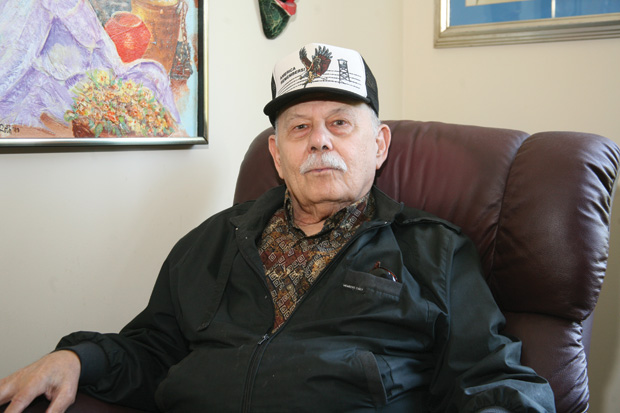Hal Roth, WW II veteran landed at Omaha Beach on D-Day; former POW
Published March 13, 2013
Hal Roth always modestly protested that he was not a “hero.” Nevertheless, the World War II veteran who survived D-Day, and who spent 10 months as a Jewish prisoner-of-war of the Nazis, fit that description perfectly. Harold “Hal” Roth, died at age 89 on Tuesday, March 6, at Delmar Gardens West in Chesterfield. He was diagnosed in November with bone cancer and recently with congestive heart failure, family members said.
Mr. Roth was born on Feb. 29, 1924, and was brought up in south St. Louis, where his parents operated a tailor shop, which later closed because of the Great Depression. He attended Hadley Technical High School and built gun turrets for American bombers at Emerson Electric. On Oct. 23, 1943, at the age of 19, he volunteered for military service because his friends were all enlisting for the war effort.
On D-Day, June 6, 1944, Mr. Roth was among the 160,000 Allied troops ordered by Gen. Dwight D. Eisenhower, the Supreme Allied Commander in Europe, to launch the final assault against the Nazis with the landing on the French beaches of Normandy.
Part of the Army’s 1st Division, Roth landed on Omaha Beach with the second wave of troops on D-Day.
ADVERTISEMENT
In August, while following his unit was following Gen. George S. Patton’s tanks, Roth and other GIs were cut off and captured by a unit of German soldiers. He immediately threw away his dog tags so his Nazi captors would not detect that he had a Jewish name. He and his fellow POWs were held for 10 months, being kept constantly on the move to avoid advancing Allied forces. Ultimately, as the Allies closed in, his captors fled, enabling Mr. Roth and the others to link up with U.S. forces.
As a POW, Roth kept a diary hidden in his jacket wrapped in a shirt. That journal, depicting his experiences in fresh, lively prose, is now on display at the National Prisoner-of-War Museum in Andersonville, Ga.
Mr. Roth’s valor was honored with the Purple Heart, the Bronze Star, the European-African-Middle Eastern Theater Ribbon, with three Bronze Battle Stars along with other medals, citations and ribbons. Protesting that he was “not a hero,” Mr. Roth, told the St. Louis Jewish Light in a May 2011 interview, “I just did what I had to do.”
After the war, Mr. Roth returned to St. Louis, where he became a freelance shop window decorator. He and his first wife Mary adopted two children and opened up a gift shop before launching a successful business in artificial plants, which he described as “fantastically realistic.” His first wife died of cancer at age 50. In the early 1980s, he met Shirley Weisman of St. Louis. They were married for 30 years.
Mr. Roth was a poet and a skilled painter who often incorporated his memories of his military service in his work. He was also proud of a specially decorated baseball cap, which contained a depiction of a prison camp and guard fence, and the words “America Remembers.”
He was also instrumental in getting the state of Florida, to which he retired at age 50, to adopt a statute exempting ex-prisoners of war from paying real-estate taxes, and played a role with fellow former POW Allen Sabol in the passage of a similar law in Missouri.
A graveside service with full military honors was held Friday at Chesed Shel Emeth Cemetery, 650 White Road, Chesterfield.
Survivors include his wife, Shirley Weisman Roth of Creve Coeur; a son, Michael Roth of Fort Lauderdale, Fla.; a daughter, Nancy Darley of Houston; two stepsons, Dr. Mark Comensky of Nevada, Mo. and Larry Comensky of St. Louis County; a step-daughter, Janis Comensky of Overland; five grandchildren and seven great-grandchildren.
Memorial contributions in memory of Hal Roth may be made to the Jefferson Barracks POW/MIA Museum, c/o Ken Kennedy, 11810 Larimore Road, St. Louis, Mo., 63138.















